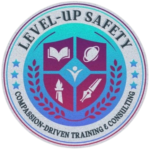The safety and well-being of our students are paramount, forming the bedrock upon which effective learning can flourish. While security measures and protocols are crucial, a truly robust safety net is woven by the proactive engagement of every member inside of a school community, particularly the dedicated faculty. By fostering a stronger school safety mindset, one where faculty members consciously enhance their situational awareness and actively choose to be up-standers, we can cultivate a more secure and supportive environment for all. Situational awareness, at its core, is about paying attention – not just passively observing, but actively processing information about our surroundings. For faculty, this means being attuned to the subtle shifts in student behavior, noticing unfamiliar individuals on campus, and recognizing potential hazards before they escalate.
This isn’t about fostering paranoia; rather, it’s about cultivating a heightened sense of observation that becomes second nature. Imagine a teacher noticing a student exhibiting unusual withdrawal or distress, a detail that might be easily overlooked in a busy hallway. By being situationally aware, that teacher is empowered to reach out, offer support, and potentially prevent a more serious issue from developing. Similarly, recognizing an unescorted adult lingering near the playground or an open, unattended exterior door allows for timely intervention and the mitigation of potential risks.
Enhancing situational awareness can be achieved through simple yet effective practices. Regular reminders during faculty meetings can keep safety in the spotlight. Encouraging open communication and the sharing of observations, no matter how small they may seem, fosters a collective sense of responsibility. Even brief, focused exercises on identifying potential risks within the school environment can sharpen observational skills. This isn’t about adding more to an already demanding workload; it’s about integrating a safety lens into our daily routines.
However, awareness alone is insufficient. The true power of a strong safety mindset lies in the willingness to act – to become an up-stander. An up-stander is someone who intervenes, speaks out, or seeks help when they witness something that doesn’t feel right or poses a potential threat. This can range from addressing minor incidents of bullying or disrespectful behavior to reporting more serious concerns to the appropriate authorities. Becoming an up-stander requires courage, but it is a courage rooted in the profound commitment to the safety and well-being of our students and colleagues.
Sometimes, the hesitation to act stems from uncertainty or a fear of overreacting. This is where clear protocols and supportive leadership play a vital role. Providing faculty with accessible and well-understood reporting mechanisms empowers them to act confidently. Emphasizing that even seemingly small concerns are valuable pieces of the safety puzzle encourages proactive communication. Furthermore, fostering a school culture that values and supports up-stander behavior, rather than dismissing concerns or fostering a fear of reprisal, is essential. When faculty members feel supported and empowered to act, they become invaluable first responders, capable of de-escalating situations and preventing harm.
Promoting a stronger school safety mindset is not a one-time initiative but an ongoing commitment. It requires continuous dialogue, training, and reinforcement. By prioritizing the enhancement of faculty and staff, situational awareness and empowering them to become confident up-standers, we invest in a proactive and responsive safety culture. This collaborative approach, where every faculty member feels equipped and responsible for the safety of our school community, will ultimately create a more secure, nurturing, and thriving environment where our students can learn and grow without fear. The strength of our school’s safety lies not just in its policies, but in the vigilant hearts and proactive actions of its faculty and staff.





